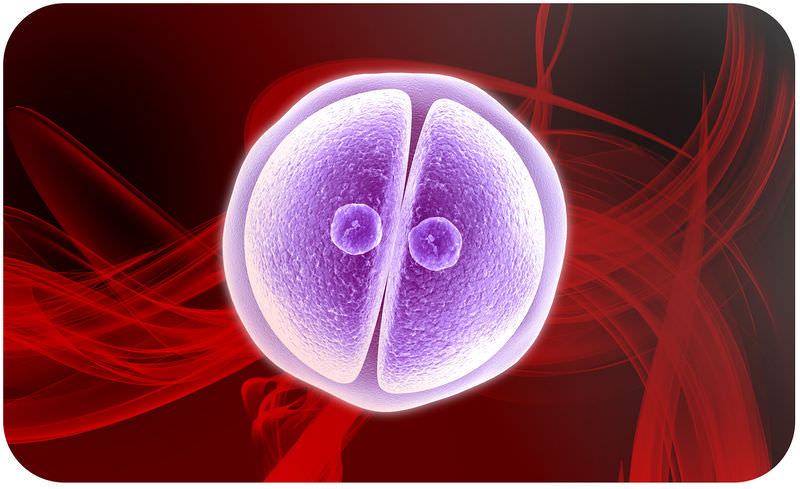2.16: Mitosis vs. Meiosis
- Page ID
- 13334
\( \newcommand{\vecs}[1]{\overset { \scriptstyle \rightharpoonup} {\mathbf{#1}} } \) \( \newcommand{\vecd}[1]{\overset{-\!-\!\rightharpoonup}{\vphantom{a}\smash {#1}}} \)\(\newcommand{\id}{\mathrm{id}}\) \( \newcommand{\Span}{\mathrm{span}}\) \( \newcommand{\kernel}{\mathrm{null}\,}\) \( \newcommand{\range}{\mathrm{range}\,}\) \( \newcommand{\RealPart}{\mathrm{Re}}\) \( \newcommand{\ImaginaryPart}{\mathrm{Im}}\) \( \newcommand{\Argument}{\mathrm{Arg}}\) \( \newcommand{\norm}[1]{\| #1 \|}\) \( \newcommand{\inner}[2]{\langle #1, #2 \rangle}\) \( \newcommand{\Span}{\mathrm{span}}\) \(\newcommand{\id}{\mathrm{id}}\) \( \newcommand{\Span}{\mathrm{span}}\) \( \newcommand{\kernel}{\mathrm{null}\,}\) \( \newcommand{\range}{\mathrm{range}\,}\) \( \newcommand{\RealPart}{\mathrm{Re}}\) \( \newcommand{\ImaginaryPart}{\mathrm{Im}}\) \( \newcommand{\Argument}{\mathrm{Arg}}\) \( \newcommand{\norm}[1]{\| #1 \|}\) \( \newcommand{\inner}[2]{\langle #1, #2 \rangle}\) \( \newcommand{\Span}{\mathrm{span}}\)\(\newcommand{\AA}{\unicode[.8,0]{x212B}}\)

Mitosis or Meiosis?
This represents a tiny embryo just beginning to form. Once an egg is fertilized, the resulting single cell must divide many, many times to develop a fetus. Both mitosis and meiosis involve cell division; is this type of cell division an example of mitosis or meiosis? The answer is mitosis. With each division you are making a genetically exact copy of the parent cell, which only happens through mitosis.
Mitosis vs. Meiosis

| Mitosis | Meiosis | |
|---|---|---|
| Purpose | To produce new cells | To produce gametes |
| Number of Cells Produced | 2 | 4 |
| Rounds of Cell Division | 1 | 2 |
| Haploid or Diploid | Diploid | Haploid |
| Daughter cells identical to parent cells? | Yes | No |
| Daughter cells identical to each other? | Yes | No |
Summary
- The goal of mitosis is to produce a new cell that is identical to the parent cell.
- The goal of meiosis is to produce gametes that have half the DNA of the parent cell.
Explore More
Use the resources below to answer the questions that follow.
Explore More I
- Mitosis and Meiosis Simulation at http://www.youtube.com/watch?v=zGVBAHAsjJM (11:53)
- What are homologous chromosomes?
- How do the location of specific genes compare between homologous chromosomes?
- What is the outcome from mitosis?
- What is a tetrad? Why are they an important feature of meiosis?
- How does meiosis differ between females and males?
Explore More II
- How Cells Divide at http://www.pbs.org/wgbh/nova/body/how-cells-divide.html
- How many daughter cells arise from mitosis? How many daughter cells are produced in meiosis?
- How does the attachment of spindle fibers differ between mitosis and meiosis I?
- Is anaphase I or anaphase II in meiosis more analogous to anaphase in mitosis? Explain your reasoning.
- How many steps are there in mitosis? How many steps are there in meiosis?
- How does interphase I of meiosis differ from interphase II of meiosis?
Review
- What is the goal of mitosis? Of meiosis?
- How many cells are created from cytokinesis following mitosis? Following meiosis?
- Which process, mitosis to meiosis, creates genetically identical cells?
- "Gametes are haploid cells." What does this sentence mean?

